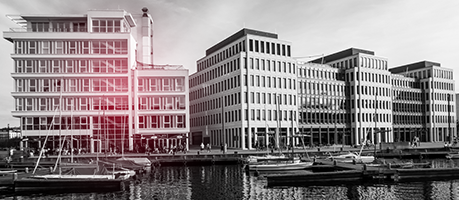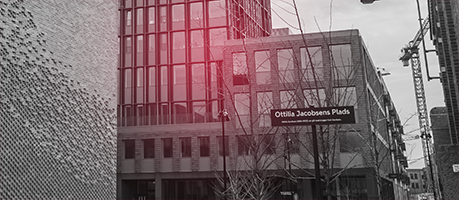we help you to
keep it cool
solutions for water-based cooling systems
shifting to
greener cooling
Heat adversely affects the health, well-being and performance of humans. A cool building, on the other hand, has many advantages.
A cooled indoor climate:
- increases the living and working pleasure, comfort and general well-being of the users of the building.
- ensures better concentration, higher productivity and lower absenteeism.
- contributes to better hygiene by reducing the risk of pests and fungi.
- contributes to a lower mortality rate, which is especially important now that the population is ageing.
Cooling becomes an increasingly important requirement to keep the indoor climate healthy and comfortable!
Water-based cooling is one of the most sustainable and efficient alternatives to cooling systems which use F-gases. Water is natural and a water-based system uses much less energy. Another advantage is that an installer does not need to be certified to install and maintain such a water-based cooling system, unlike systems based on synthetic refrigerants. Furthermore, a water-based cooling system, if properly installed, has a much longer lifespan.
Water-based cooling systems are forward-looking solutions to meet the challenge of overheating!
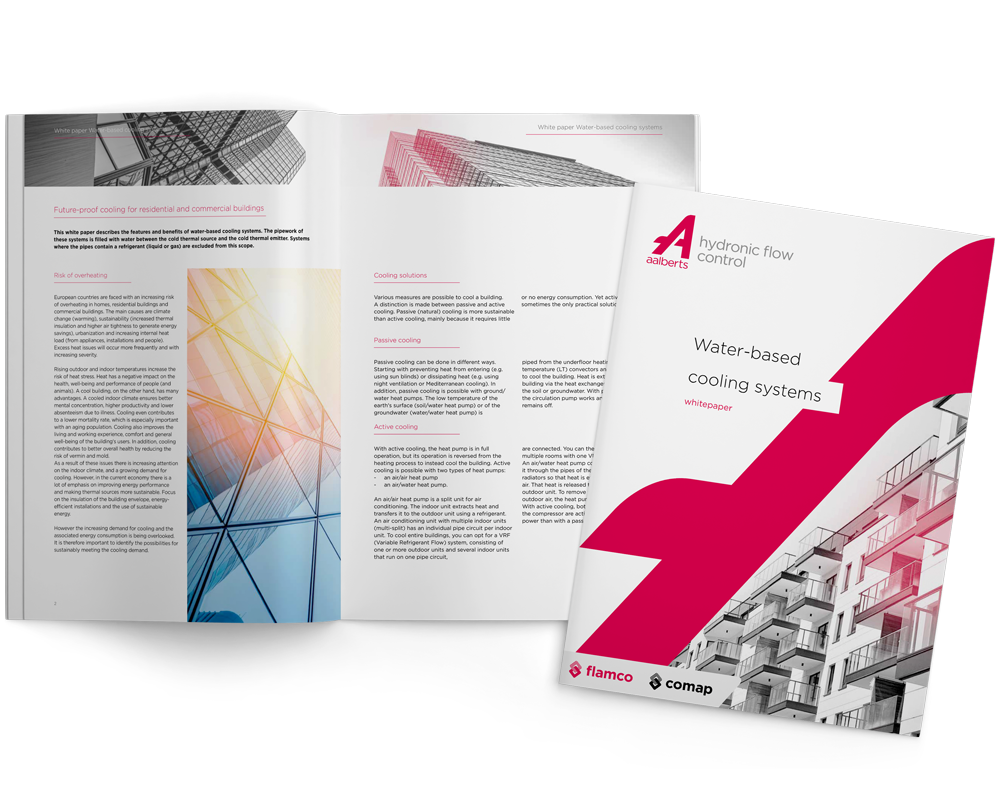
download the water-based cooling systems whitepaper
efficient alternative to
F-gas cooling systems
Out of all the ways to cool a building, water-based cooling is certainly one of the most sustainable ways. It is also an efficient alternative to F-gas cooling systems.
Water is natural and a waterborne system consumes much less energy. This is partly because water has a high specific heat and can store a lot of energy per unit volume. Water is also safe and manageable.
A water-based cooling system can function through both passive and active cooling. Passive or natural cooling is more sustainable than active cooling, mainly because it requires little or no energy consumption. Still, active cooling is sometimes unavoidable.
Another advantage of a water-based cooling system is that an installer does not have to be certified to install and maintain such a cooling system. The opposite applies to systems that work on the basis of synthetic and natural refrigerants.
Adjusting the system is also easy due to decentralized operation. The installer can easily expand or shrink the system with connections, both during and after the construction process. That is more radical and complicated with a DX system.
Furthermore, a water-based cooling system, if properly installed, has a much longer service life. Water-based cooling systems are future-oriented solutions to meet the challenge of overheating. Each system contains a piping network (distribution) and emitter system.
Water-based cooling systems work differently to heating systems. Therefore, special measures may be necessary to prevent condensation and gas formation.
Due to cooling, condensation can occur on the cold pipes. This reduces the insulation and allows even more moisture to precipitate. Typically, a water temperature of 16 ºC (dew point) is sufficient to prevent condensation on the underfloor heating pipes. The dew point partly depends on the relative humidity (RH) at a given temperature. At a certain temperature the RH becomes lower, consequently the dew point will also be lower. But in extreme heat and/or high humidity, the dew point can also be higher. Vapor-tight insulation of the (supply) pipes can prevent condensation (and corrosion). There is less heat loss (condensation affects heat) and the cooling system has to work less hard.
Low-temperature systems are vulnerable to trapped air, which can eventually cause corrosion and biofilm. As a result, the systems no longer work optimally. Conventional air separators are inefficient at low temperatures. For effective air separation it is necessary to use a vacuum degasser.
Passive cooling can be done in different ways. Starting with preventing the entry of heat (e.g. using sun protection) or dissipating heat (e.g. by means of night ventilation or Mediterranean cooling).
Passive cooling can be done in different ways. Starting with preventing the entry of heat (e.g. using sun protection) or dissipating heat (e.g. by means of night ventilation or Mediterranean cooling).
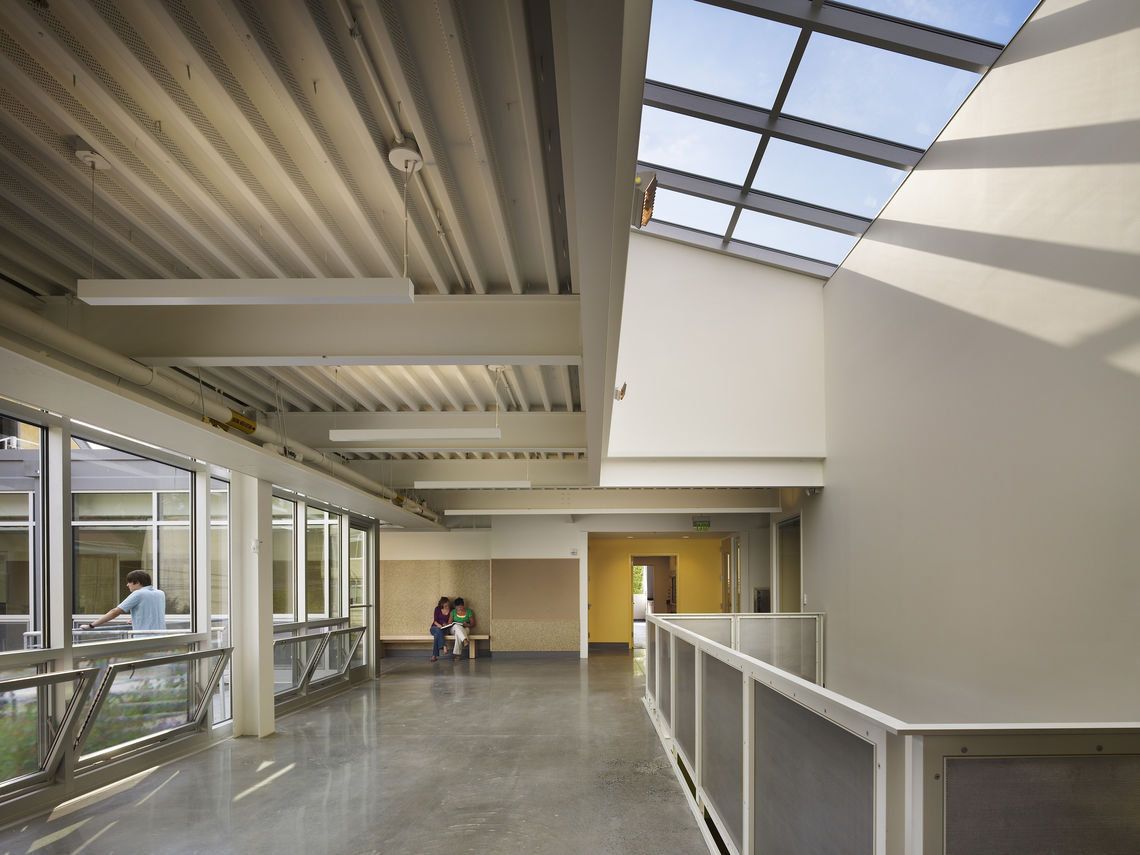
In addition, passive cooling is possible with ground/water heat pumps. The low temperature of the ground floor (soil/water heat pump) or of the groundwater (water/water heat pump) is pumped around via pipes from the underfloor heating or low temperature (LT) convectors to cool the building. Via the heat exchanger, heat is extracted from (the heating water of) the building and stored in the soil or groundwater. With passive cooling, only the circulation pump works and the compressor remains off.
With active cooling, the heat pump is fully operational, but the operation is reversed compared to the heating process to cool the building. Active cooling is possible with two types of heat pumps:
- an air/air heat pump
- an air/water heat pump.
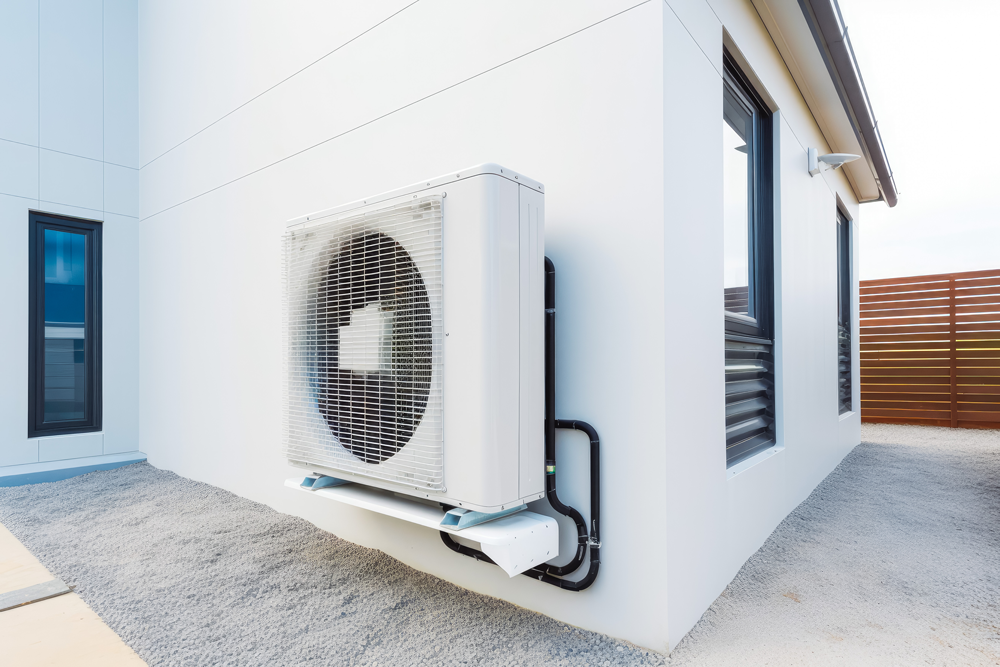
An air/air heat pump is a split unit for air conditioning. The indoor unit extracts heat and transfers it to the outdoor unit using a refrigerant. An air conditioning unit with multiple indoor units (multi-split) has an individual pipe circuit per indoor unit. To cool entire buildings, you can opt for a VRF (Variable Refrigerant Flow) system, consisting of one or more outdoor units and several indoor units that run on one pipe circuit, are connected. You can therefore heat and/or cool multiple rooms with one VRF system.
An air/water heat pump cools the water and pumps it through the pipes of the underfloor heating or LT radiators so that heat is extracted from the indoor air. That heat is released to the outside air via the outdoor unit. To remove that indoor heat, to warmer outdoor air, the heat pump must have a compressor. With active cooling, both the circulation pump and the compressor are active and you consume more power than with a passive cooling heat pump.
Out of all the ways to cool a building, water-based cooling is certainly one of the most sustainable ways. It is also an efficient alternative to F-gas cooling systems.
Water is natural and a waterborne system consumes much less energy. This is partly because water has a high specific heat and can store a lot of energy per unit volume. Water is also safe and manageable.
A water-based cooling system can function through both passive and active cooling. Passive or natural cooling is more sustainable than active cooling, mainly because it requires little or no energy consumption. Still, active cooling is sometimes unavoidable.
Another advantage of a water-based cooling system is that an installer does not have to be certified to install and maintain such a cooling system. The opposite applies to systems that work on the basis of synthetic and natural refrigerants.
Adjusting the system is also easy due to decentralized operation. The installer can easily expand or shrink the system with connections, both during and after the construction process. That is more radical and complicated with a DX system.
Furthermore, a water-based cooling system, if properly installed, has a much longer service life. Water-based cooling systems are future-oriented solutions to meet the challenge of overheating. Each system contains a piping network (distribution) and emitter system.
Water-based cooling systems work differently to heating systems. Therefore, special measures may be necessary to prevent condensation and gas formation.
Due to cooling, condensation can occur on the cold pipes. This reduces the insulation and allows even more moisture to precipitate. Typically, a water temperature of 16 ºC (dew point) is sufficient to prevent condensation on the underfloor heating pipes. The dew point partly depends on the relative humidity (RH) at a given temperature. At a certain temperature the RH becomes lower, consequently the dew point will also be lower. But in extreme heat and/or high humidity, the dew point can also be higher. Vapor-tight insulation of the (supply) pipes can prevent condensation (and corrosion). There is less heat loss (condensation affects heat) and the cooling system has to work less hard.
Low-temperature systems are vulnerable to trapped air, which can eventually cause corrosion and biofilm. As a result, the systems no longer work optimally. Conventional air separators are inefficient at low temperatures. For effective air separation it is necessary to use a vacuum degasser.
Passive cooling can be done in different ways. Starting with preventing the entry of heat (e.g. using sun protection) or dissipating heat (e.g. by means of night ventilation or Mediterranean cooling).
Passive cooling can be done in different ways. Starting with preventing the entry of heat (e.g. using sun protection) or dissipating heat (e.g. by means of night ventilation or Mediterranean cooling).

In addition, passive cooling is possible with ground/water heat pumps. The low temperature of the ground floor (soil/water heat pump) or of the groundwater (water/water heat pump) is pumped around via pipes from the underfloor heating or low temperature (LT) convectors to cool the building. Via the heat exchanger, heat is extracted from (the heating water of) the building and stored in the soil or groundwater. With passive cooling, only the circulation pump works and the compressor remains off.
With active cooling, the heat pump is fully operational, but the operation is reversed compared to the heating process to cool the building. Active cooling is possible with two types of heat pumps:
- an air/air heat pump
- an air/water heat pump.

An air/air heat pump is a split unit for air conditioning. The indoor unit extracts heat and transfers it to the outdoor unit using a refrigerant. An air conditioning unit with multiple indoor units (multi-split) has an individual pipe circuit per indoor unit. To cool entire buildings, you can opt for a VRF (Variable Refrigerant Flow) system, consisting of one or more outdoor units and several indoor units that run on one pipe circuit, are connected. You can therefore heat and/or cool multiple rooms with one VRF system.
An air/water heat pump cools the water and pumps it through the pipes of the underfloor heating or LT radiators so that heat is extracted from the indoor air. That heat is released to the outside air via the outdoor unit. To remove that indoor heat, to warmer outdoor air, the heat pump must have a compressor. With active cooling, both the circulation pump and the compressor are active and you consume more power than with a passive cooling heat pump.
water-based cooling
The areas of application for water-based cooling systems ranges from industrial applications such as data centers, to commercial applications such as food refrigeration to cooling in offices and residential buildings. As with heating systems, a lot of energy can be saved through professional design, implementation and the right products, which in turn increases system efficiency. Read all about it in the extensive brochure....
download the brochure


